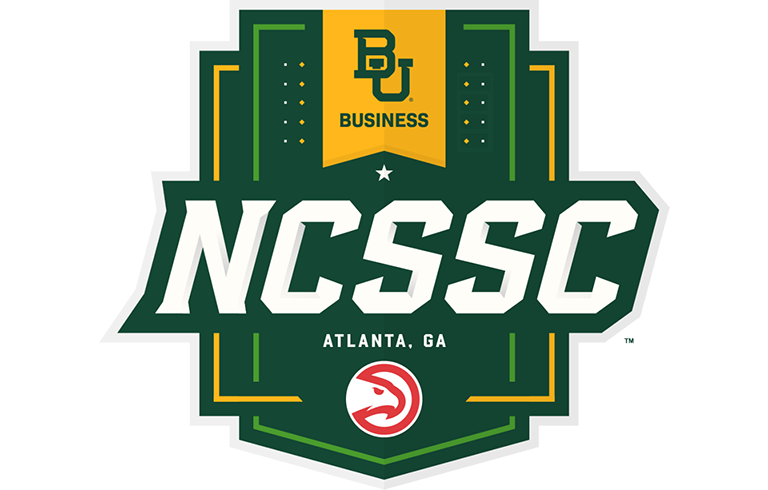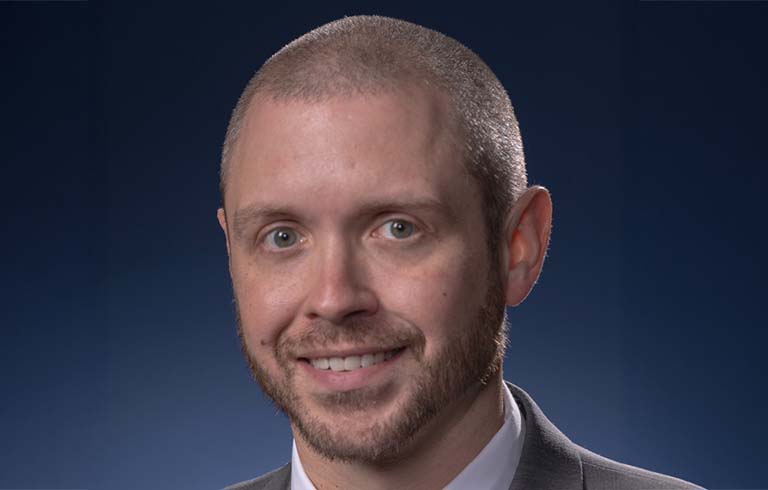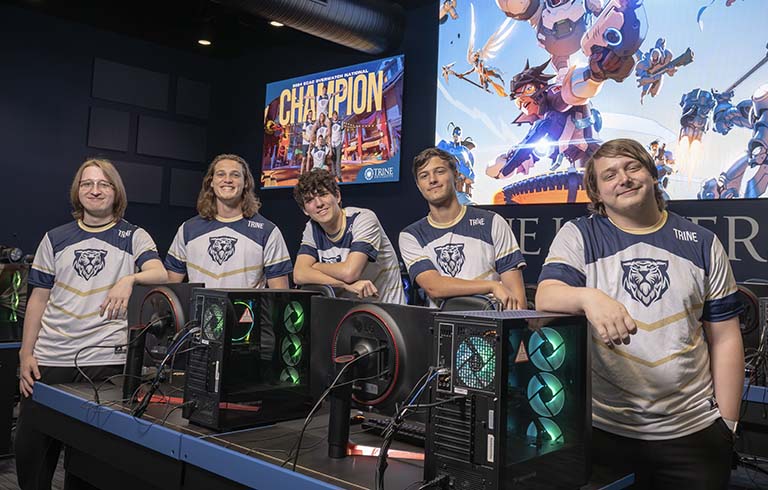Prosthetics can be a blessing for people who are missing a limb, but they’re also
very expensive.
That expense can make them impractical for children and adolescents who are constantly
growing and changing. However, a senior design group of Trine University engineering
majors completed a project this year that provided solutions for two teenage girls
born without left hands.
With support from the Kosciusko County Community Foundation’s Helping Hands Fund,
the team of Marissa Shaver, a biomedical engineering major from Fostoria, Ohio, Ben
Avey, a mechanical engineering major from Pendleton, Indiana, David Cervera, a biomedical
engineering major from South Bend, Indiana, and Karina Bruce, a biomedical engineering
major from Findlay, Ohio, designed low-cost prosthetics that will allow the girls
to perform routine tasks such as curling their hair.
“I had been working with these girls since the spring of 2020, so almost a whole calendar
year now,” said Shaver. “Just to see their excitement and their family’s excitement
was awesome.”
Lending Helping Hands
The Helping Hands Fund began as a discussion during a meeting of the Warsaw, Indiana,
chapter of the Optimist Club, a service club that focuses on helping children. Jody
Claypool, an adjunct faculty member at Trine who operates his own engineering and
product development company, and another member began talking about a prosthetic the
member had created for his daughter’s friend.
Claypool, who had several 3D printers as part of his business, suggested they look
for other opportunities to help people. The two Optimists later presented the idea
to the entire club.
“Before we got back to our table we had two people come up and say, ‘Yeah, there are
people that we know,’ ” he said.
The effort continued to grow and people wanted to support it financially, but Claypool
felt it needed to stay separate from his for-profit business. He approached the Kosciusko
County Community Foundation, which allowed him to create the Helping Hands Fund earlier
this year.
The fund provides support for design, creation, production and distribution of prosthetic
hands for children, according to the foundation. The prosthetics are specifically
non-medical devices, meant to be “worn” rather than requiring surgery.
Claypool had worked with a senior design team at the education center Trine operated
in Warsaw. As requests grew, he reached out to Jason Blume, executive director of
Trine innovation 1, to see if there was a way to involve main campus students.
COVID interruption
Shaver began working on the project with three biomedical engineering seniors in the
spring of 2020 as part of a special topics course. The group downloaded some preliminary
designs from e-NABLE, a website with 3D printer designs for prosthetics.
However, before the group could complete the project, Trine University’s main campus
closed due to the COVID-19 pandemic and students were sent home.
“It was kind of a stab to the gut,” she said.
When the new group began in the fall, they decided to start with a different initial
design than the prior group.
“We were going in a little blind because we didn’t know how well they were going to
be able to use our device,” said Cervera.
The group began by looking at multiple devices online and narrowing it down to one
design.
“One of our goals was to create a cost-effective device,” said Bruce. “Prosthetics
are really expensive and take a large financial toll on families, and a lot of times
insurance won’t cover them. By 3D printing, we were able to reduce that price point
a lot.
“Another goal was for it to be esthetically pleasing. We also wanted it to be functional
and apply enough force to hold heavier objects.”
Avey said one of the biggest challenges was finding a way to size it to the two individuals,
even after taking castings of their limbs.
“That took a while to figure out,” he said. “We ended up re-designing the whole prosthetic
on our own, even though we referenced the design we had chosen. We made sure to include
everything the girls wanted to do.”
Trine’s Design Engineering Technology department assisted the group with 3D printing,
and printed all the parts for the prosthetics. The group gave the girls prototypes
in mid-February and made modifications based on the feedback they received.
“They had a really good response to even just a prototype device,” said Shaver.
The girls received the final iterations in April.
Using existing function
The final prosthetics are designed so that the partial palm each girl has fits in
a specially sized reservoir developed from castings taken at the beginning of the
project. The girls open and close fingers on the prosthetic by flexing their wrist.
“It can work off the function they already have,” said Bruce, who noted that the devices
apply enough force to allow the girls to grip a gallon of milk.
Shaver said the group performed validation testing with the girls by having them pick
up objects such as a golf ball, softball and frying pan.
“When we presented their final devices, it was a huge improvement from their prototype
devices. They were super excited,” Shaver said. “They did really well with that final
device.”
Claypool said that in addition to the functionality the girls get now, the devices
will help them practice and prepare for more elaborate prosthetics once they reach
adulthood.
“This allows them to adopt the technology earlier and get some of the learning curve
out of the way, as to what they would want to get out of the prosthetic, how to use
the prosthetic, and what sort of things to expect as they get older,” he said. “When
they are mature and ready to make the investment in some of those higher-dollar prosthetics,
they’ve got a lot more experience.”
Career and program growth
In addition to the benefiting those who receive the prosthetics, Claypool said projects
through Helping Hands also provide student engineers the opportunity to build product
that has a real-world impact.
“Employing engineering principles in a way that manifests in a real device is a good
story to have when you interview with an orthopedic company,” he said.
Each of the Trine students said the project fits into some part of their future plans.
Shaver will attend Eastern Michigan University to earn a master’s degree in prosthetics
and orthotics. Bruce, whose responsibilities for the Trine project included materials,
will focus on biopolymers in the Ph.D. in biomedical engineering program at the University
of Cincinnati.
Cervera is attending the University of Pittsburgh to earn a master’s degree in medical
product development. Avey hopes to become a product development engineer and said
he would love to work in the orthopedic medical device industry.
Claypool said Helping Hands is looking to expand the number of people it serves and
give more student groups the opportunity to complete similar projects. In the future,
he could see it evolving into bionics.
“The next phase for these types of designs are devices that go beyond just responding
to the function of a hand or an arm, but can recognize the firing of the muscles,”
he said. “I think those are going to become more commonplace and we are definitely
interested in exploring that technology.”
“I feel incredibly blessed to be on this journey with everybody who’s decided to join
and participate,” he said. “There’s a real impact that’s being made. Everyone on the
Trine team has done a great job. I know the families appreciate it and I appreciate
it.
“It’s a lot of wins for a lot of individuals who are involved in the program.”
Top photo: A Trine University senior design team completed a project this year that provided
low-cost prosthetics for two teenage girls born without left hands. From left, David
Cervera, a biomedical engineering major from South Bend, Indiana, Karina Bruce, a
biomedical engineering major from Findlay, Ohio, Ben Avey, a mechanical engineering
major from Pendleton, Indiana, and Marissa Shaver, a biomedical engineering major
from Fostoria, Ohio.







